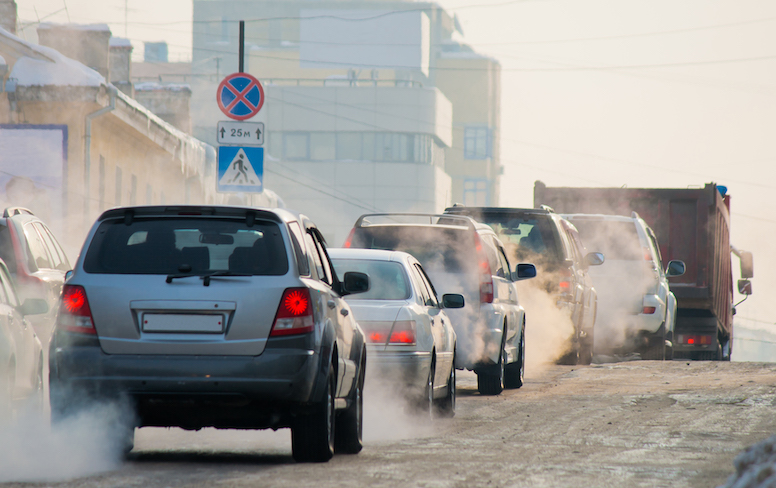
Faced with uncertainty over fuel economy standards, four automakers choose to support stronger government regulation.
Four of the world’s largest automakers recently agreed to sign a joint framework, negotiated with California, to increase the fuel efficiency of their vehicles voluntarily. The agreement comes roughly one year after the Trump Administration proposed a rule that aimed in part to rollback stringent fuel efficiency standards finalized under the Obama Administration.
That proposed Safer Affordable Fuel-Efficient (SAFE) Vehicles Rule, if finalized, would lower the average fuel economy standard from the 54.5 miles per gallon target adopted by the Obama Administration in 2012 to about 37 miles per gallon beginning in 2020. The agreement between California and the automakers, however, requires a 3.7 percent yearly increase in the annual fuel economy of their car fleets beginning in 2022 and ultimately peaks at 51 miles per gallon in 2026.
Why would a group of automakers voluntarily agree to impose emissions standards upon themselves that are stricter than the emissions standards proposed by the federal government? The answer might not be immediately obvious to anyone who would assume that companies always prefer less regulation.
For the automakers, the answer is simple: The framework—in effect, a form of self-regulation—provides a degree of regulatory certainty. Distinct from a federal regulation that would bind all U.S. automakers, however, the agreement with California only applies to the four signatory automakers. In a joint statement, Ford Motor Company, Volkswagen of America, Honda, and BMW reportedly explained that the agreement with California allows them to avoid “a patchwork of regulations while continuing to ensure meaningful greenhouse gas emissions reductions.”
This concern about a “patchwork” of regulations stems from the complicated nature of vehicle emissions regulation in the United States.
Although the Energy and Policy Conservation Act directs the National Highway Traffic and Safety Administration (NHTSA) to set national average fuel economy standards, the Clean Air Act also grants the U.S. Environmental Protection Agency (EPA) the authority to regulate greenhouse gas emissions, which are the inevitable byproduct of burning gasoline. Because of their somewhat overlapping authority, NHTSA and EPA jointly issued fuel economy standards under the Obama Administration and jointly proposed the recent SAFE Vehicles Rule under the Trump Administration.
Yet there is still a third player in the mix: California. At the time the Clean Air Act was passed in 1970, California had already implemented many of its own air pollution and emissions laws, which any new federal regulations would have preempted. Recognizing this fact, the Clean Air Act permits California to apply to the EPA for a waiver from federal preemption if its state vehicle emissions standards are at least as stringent as the existing federal standards.
Although California is only one of 50 states, it reportedly generates about 12 percent of all U.S. vehicle sales. Furthermore, once EPA grants California a waiver to enact stricter vehicle emissions standards, other states can then adopt California’s standard—an option that 13 states have chosen to pursue. As a result, California has a large degree of influence over automakers who prefer to have a single fleet of cars that meets both California’s and the federal government’s fuel economy and emissions standards.
The proposed SAFE Vehicles Rule, however, seeks to revoke California’s Clean Air Act waiver.
Supporters of this revocation, such as Myron Ebell from the Competitive Enterprise Institute, claim that eliminating the waiver “puts California back on an equal footing with the other 49 states and means that California cannot dictate what kinds of cars people can drive across the entire country.”
But California does not intend to relinquish without a fight its right to seek a waiver and set more stringent emissions standards. In fact, California Attorney General Xavier Beccera has vowed that California would “use every legal tool at its disposal to defend today’s national standards and reaffirm the facts and science behind them.”
With the fate of California’s waiver uncertain and the likelihood that any final rule issued by NHTSA and EPA would be challenged in court, the four automakers likely saw a compromise with California as their best option. Although the agreement with California imposes far more stringent fuel economy standards upon the automakers than those proposed by the Trump Administration, it also allows them to get started on planning for their future automobile fleets.
“Uncertainty from protracted litigation is a major concern for an industry with long production cycles, so much capital investment, and 10 million Americans dependent on auto paychecks,” said the Alliance of Automobile Manufacturers in a press release.
Empirical evidence also supports the Alliance of Automobile Manufacturer’s sentiment that regulatory uncertainty is costly. Several scholars have found that uncertainty surrounding emissions regulations can create significant economic and environmental costs.
EPA, however, disagrees that the agreement between California and the automakers provides the industry with any certainty. An EPA spokesman has reportedly claimed that the agreement “does nothing to further the one national standard that will provide certainty and relief for American customers.”
Ironically, the automakers may now face an even more uncertain future following an announcement that the U.S. Department of Justice will initiate an antitrust investigation into whether the automakers “violated federal competition law.”



